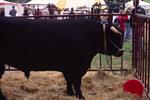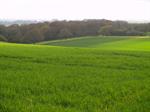Expand your knowledge of cattle production.
Understand more on calf rearing
- Learn about dairy cattle and beef cattle
- Improve your business or employment prospects on farm.
- This course will help you develop the necessary skills to successfully run a cattle farm.
- It covers a range of different aspects, and gives the option of selecting electives that best suit your interests.
- There are five core modules and one elective module.
This course is suitable for -
- Farm Staff
- If you wish to work on a farm
- If you wish to work with cattle
- Agricultural Marketing staff
- Agricultural Writers
- Farm Management
- Dairy Cattle Managers
- Beef Cattle Managers
- Calf rearing staff
Course Content and Structure
There are six modules in this course. There are five core modules in Beef Cattle, Farm Management, Dairy Cattle, Calf Rearing and Pasture Management. You then study one elective module from Animal Feed and Nutrition, Animal Health Care, Agricultural Marketing and Animal Breeding.
 Beef Cattle
Beef Cattle
There are ten lessons in this 100 hour module, as follows
1. Introduction to Beef Production and Breeds
2. Beef Cattle Production Systems
3. Beef Cattle Breeding
4. Viral and Bacterial Diseases
6. Parasitic and Other Diseases
6. Beef Cattle Nutrition and Feeding
7. Commercial Herd Management
8. Feed Lot Management
9. Stud Herd Management
10.Management, Marketing and Economics
Dairy Cattle
There are nine lessons in this module (also 100 hours), as follows:
1. Dairy Breeds
2. Dairy Products
3. The Lactation Cycle
4. Pests & Diseases of Dairy Cattle
5. Feeding Dairy Cattle
6. Managing Dairy Cattle
7. Breeding Dairy Cattle
8. Managing Dairy Facilities
9. Dairy Business Planning
Calf Rearing
This module is also 100 hrs duration, but has seven lessons, as outlined below:
1. Calving and Culling
2. Calf Management
3. Calf Health Care
4. Calf Rearing
5. Housing the Calves
6. Weaning Calves
7. Post Weaning
Farm Management
This module has eight lessons:
1. Strategic Farm Planning
2. Farm Business Plans
3. Business Assessment
4. Viability Analysis
5. Management Strategies
6. Human Resources
7. Physical Resources
8 Natural Resources
 Pasture Management
Pasture Management
There are 8 lessons in this module, as outline below.
1. Introduction to Pastures
2. The Grass Plant
3. Pasture Varieties
4. Site Considerations
5. Establishing New Pastures
6. Managing Existing Pastures
7. Managing Stock on Pasture
8. Pasture Management Work Tasks
ELECTIVES
In addition to the above (compulsory) modules; you must also complete your choice of one other module from the following options:
Animal Breeding
There are 7 lessons in this course:
- Introduction To Genetics
- Genetics
- Selection
- Pure Breeding
- Introduction To Cross Breeding
- Cross Breeding
- Livestock Improvement
 Agricultural Marketing
Agricultural Marketing
There are 8 lessons in this course:
- Agricultural Marketing Concepts
- The Role of Marketing
- Approaches to Marketing
- The Production Approach: 1820sto 1910s
- The Sales Approach: 1920s to 1960s
- The Marketing Approach: Stage One - 1960s to 1980s
- The Marketing Approach: Stage Two - 1980s to Present
- The Goals of Marketing
- Managing the Marketing Process
- Marketing - An Evolutionary Process
- Farm Marketing Objectives and Strategies
- Supply And Demand
- The Marketing Mix
- Developing a Farm Marketing Plan
- Organising the Planning Process
- Target Marketing
- Preliminary Research
- Analysing Market Opportunities
- External Influences
- Overseas Influences
- Internal Influences
- Analysis of Business Resources
- Analysis of Market Share
- Analysis of Product Characteristics
- Analysis of Advertising
- Analysis of Price
- Financial Capacity
- Analysis of Innovative Potential
- Selecting Target Markets - Market Segmentation
- Physical Basis for Segmenting the Market
- Behavioural Basis for Segmenting the Market
- Handling Produce
- Developing the Marketing Mix
- The ‘Product’ Element
- The ‘Price’ Element
- The ‘Promotion’ Element
- The ‘Place’ Element
- Product Life Cycle
- Customer Relations
- Customer Service
- Customer Care Policy
- Customer Care - Levels of Involvement
- Effective Communication
- Dealing with Complaints
- Maximising Customer Service
- Market Research
- The Importance of Market Research
- The Research Process
- Analysing Costs and Benefits
- Promotions
- Promoting Products
- Channels of Communication
- Publicity Marketing
- Advertising
- Structuring an Advertisement or Promotion
- Copywriting in Advertising
- Managing Marketing
- Managing the Marketing Plan
- Sales and the Market
Animal Feed and Nutrition
There are 10 lessons in this course:
- INTRODUCTION TO ANIMAL FOODS
- Terms and Definitions
- Groups of Foods
- Other Terms That Are Used
- Food Processing Terms
- Water
- FOOD COMPONENTS - CARBOHYDRATES AND FATS
- Carbohydrates
- Carbohydrates as a Source Of Energy
- Fats and Oils
- Adipose Tissue Deposits in Animals
- Fat Deposits in Different Animals
- FOOD COMPONENTS - PROTEINS, MINERALS, AND TRACE ELEMENTS
- Composition of Proteins
- The Build Up Of Proteins
- Biological Value of Protein
- Protein Content of Foods
- The Function of Protein
- Feeding Urea to Ruminants
- Major Minerals
- Trace Elements
- Vitamins
- EVALUATING FOODS AND DIGESTIBILITY
- Analysis of Feed Stuffs
- Calculating Digestibility
- Protein Value
- Energy Value
- Nutrient Value of Some Common Foods
- CLASSIFYING FOODS PART A
- Cereals and Cereal By-Products
- Brewing By-Products
- Grasses, Legumes and Succulents
- Lucerne
- Sainfoin
- Other Succulent Foods
- Roughage, Hay, Silage and Dried Grass
- CLASSIFYING FOODS PART B
- Oil and Legume Seeds
- Oil Seeds and Their Products
- Legume Seeds
- CLASSIFYING FOODS PART C
- Fodder Trees and Animal Products
- Fodder Trees and Shrubs
- Animal Products
- CALCULATING RATIONS PART A
- The Object of Rationing
- Nutritional Requirements of the Animal
- Calculating a Maintenance Ration
- Cattle at Pasture
- Working Out Rations for a Herd
- CALCULATING RATIONS PART B
- Nutrient Requirements for a Dairy Cow
- Working Out the Total Requirements
- Feeding a Ration to Meet Nutrient Needs
- The Dairy Ration
- CALCULATING RATIONS PART C
- Ready Mix Feeds
- Using Protein Contents
- A Summary of Rationing
- Further Considerations in Rationing
Animal Health Care
You can find more detailed information on each of the modules by clicking the links below.
Modules
Note that each module in the Qualification - Certificate in Cattle Production is a short course in its own right, and may be studied separately.

Match the cattle to the nutrient feed requirements (eg. "Black baldies" are used in Nebraska where feed is mainly grazing grass, because this breed has relatively low protein requirement).
Some cattle breeds are more difficult to control behaviour (eg. Brahmans, Jerseys and horned Ayreshires have bad reputations. Bulls and young steers in particular can be troublesome).
The way young animals are handled has a big impact upon their behaviour in later life.
Other factors that can make cattle difficult to handle include:
- nutrient deficiencies (particularly magnesium)
- windy weather
Husbandry Tips
- Cattle eat longer grass than sheep, and are not as fussy about what they eat
- Minimise stress and you will get better meat and milk production.
- Dairy cattle generally require different and better quality feeding than beef cattle.
- Low input systems may not provide top quality meat production.
- Male calves may be left uncastrated to reduce fat accumulation.
- Cattle are sometimes kept in stalls (ie. cubicles) to reduce labour and other costs, however stalls are not allowed for organic systems.
- Meat quality and general health may be improved by grain feeding, but this is expensive and only viable if the market is strong.
- Any buildings in which cattle are kept must have optimum ventilation to minimise disease and remove ammonia from urine and bedding.
- Being social animals, cattle herds need to be large enough to allow social contact, but not so large as to disrupt behaviour.
Feeding Tips
- Cattle eat more at sunrise and sunset than other times of the day.
- While milking, cows need to be fed better than other cattle, this may involve supplements of hay & concentrates (eg. Lucerne, bran, chaff, some grain and minerals). If under fed, cows will make a lot of noise to let you know).
- For top quality meat and milk production in anything but the best locations, high input supplementary feeding may be necessary.
- Root crops may be an alternative to fodder in autumn and winter.
If you would like to learn more about cattle production?
Understand the care and breeding of cattle?
Rear calves?
Understand dairy cattle and their nutritional requirements?
Improve your career prospects in the field of cattle farming.
Then this is the course for you. You can start as soon as you and learn from our highly experienced and friendly tutors!
